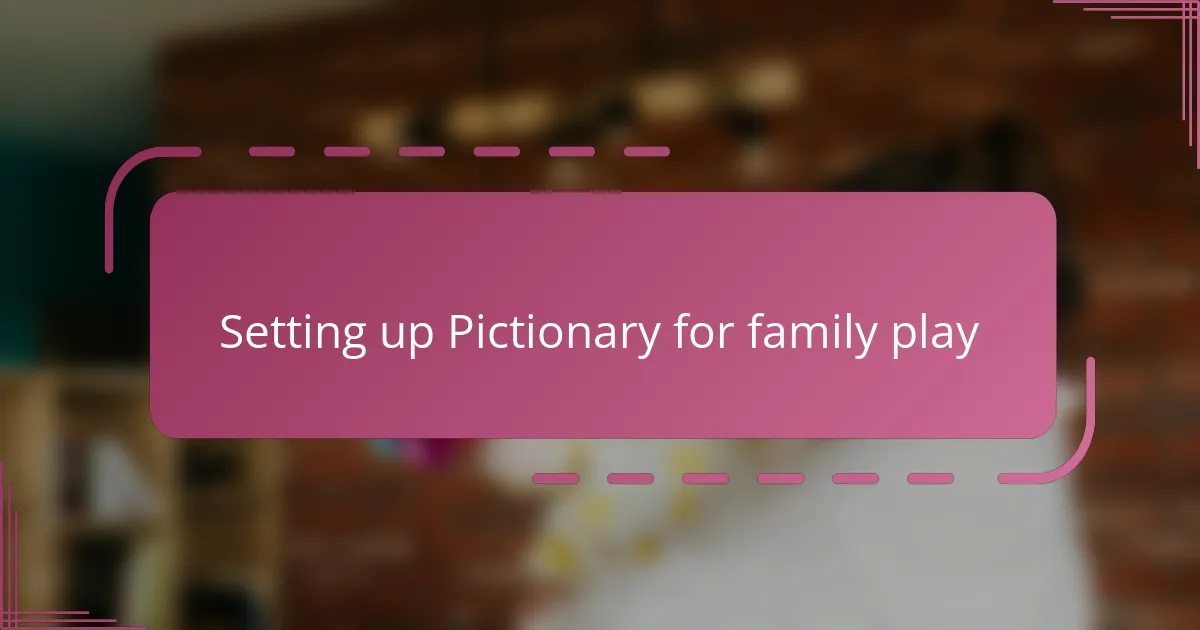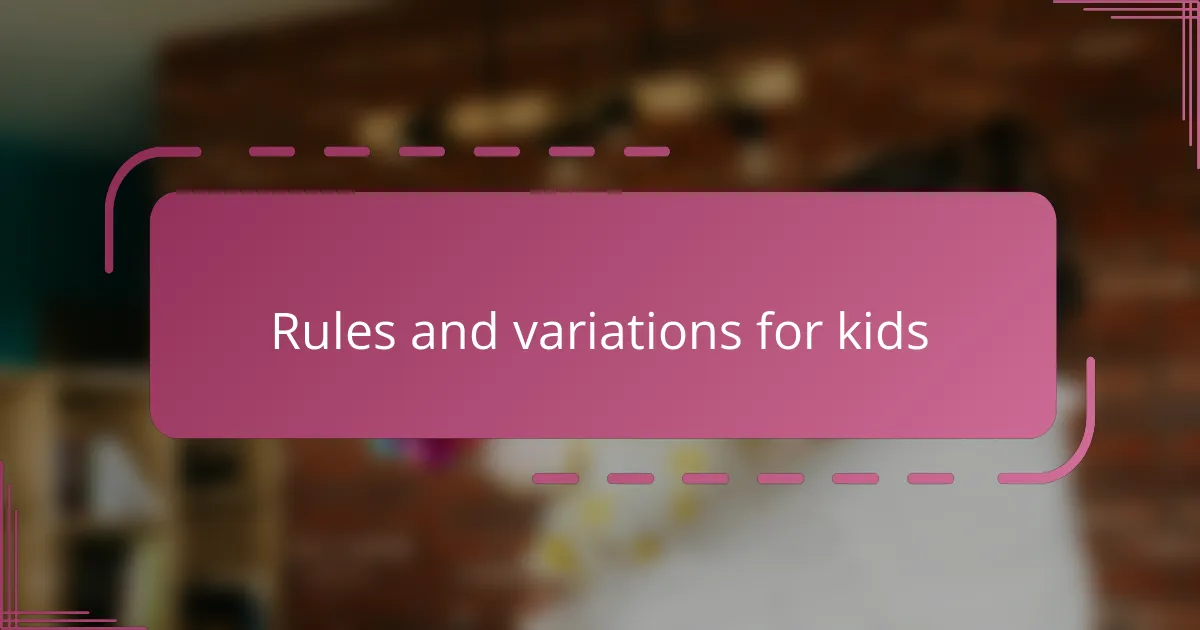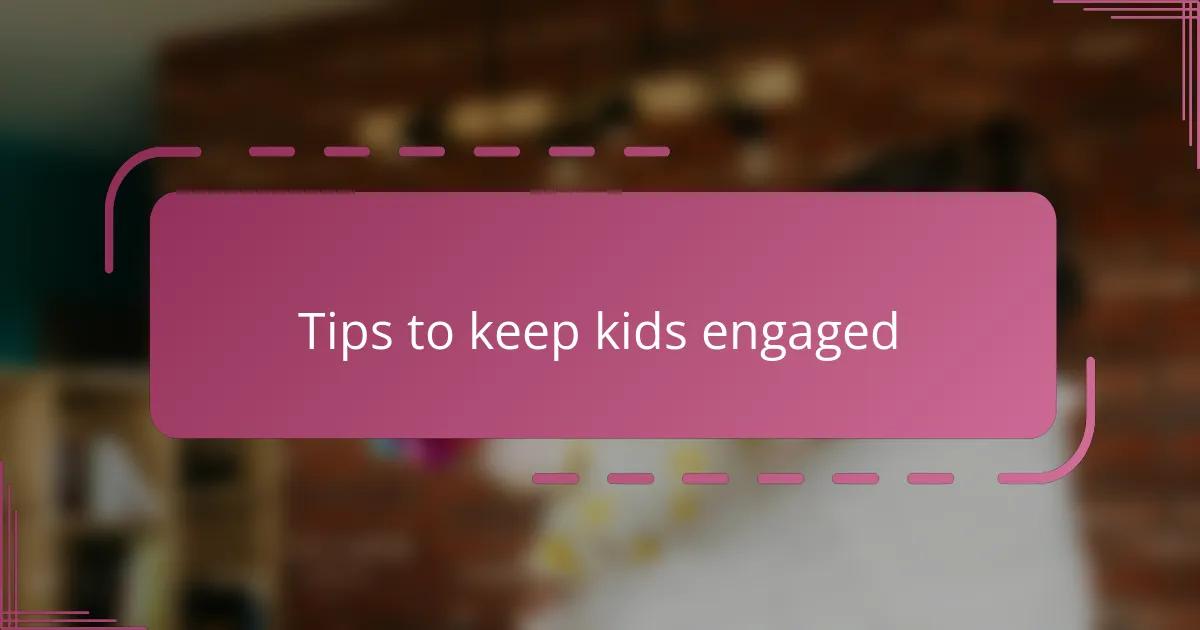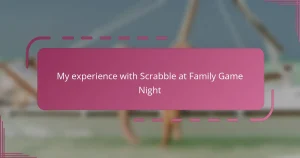Key takeaways
- Pictionary fosters creativity, communication skills, and teamwork among children, enhancing their problem-solving abilities.
- The game improves hand-eye coordination and expands vocabulary through engaging and playful interaction.
- Simple setups and adaptable rules create an inviting environment, allowing all players to participate and enjoy the game regardless of skill level.
- Incorporating lively rounds and celebrating all drawings keeps children engaged, transforming playtime into memorable family bonding experiences.

What is Pictionary and its benefits
Pictionary is a classic drawing game where players sketch clues for their teammates to guess within a time limit. I’ve found it’s incredible how even the simplest doodles spark bursts of laughter and excitement among my kids. Isn’t it amazing how a quick sketch can turn into a shared moment of joy?
Beyond the fun, Pictionary secretly boosts creativity and sharpens communication skills. When my children try to convey tricky words through drawings, I see them thinking deeply about how to express ideas in new ways, which I believe strengthens their problem-solving abilities. Have you noticed how such games quietly build important life skills?
What’s more, Pictionary naturally encourages teamwork and patience. Watching my kids cheer each other on and take turns gracefully reminds me how play often teaches more than I expect. These moments of collaboration have become some of my favorite memories with them.

How Pictionary supports child development
Playing Pictionary with my kids has shown me how much it helps their hand-eye coordination without them even realizing it. As they rush to sketch and connect what they imagine to the paper, I see their fine motor skills quietly strengthening. Have you ever noticed how their little fingers gain so much control just by having fun?
One thing that stands out is how Pictionary expands their vocabulary in such a natural way. When my youngest struggles to draw a word, we talk about what it means and how to break it down visually. This process sparks curiosity and language growth—something I treasure as a parent watching their minds unfold.
Besides cognitive gains, Pictionary taps into emotional intelligence I’ve seen first-hand. As my kids guess guesses and sometimes miss the mark, they practice patience and learn encouragement. Those moments, filled with laughter and support, teach empathy more profoundly than any lesson I could plan.

Setting up Pictionary for family play
Setting up Pictionary for family play is easier than you might think. I usually start by gathering simple materials like paper, markers, and a timer—nothing fancy, just what we have around the house. Have you ever noticed how having these basics ready right before game time makes the whole experience feel inviting and stress-free?
I like to create a cozy space for playing, often around our kitchen table or living room floor, where everyone can see each other’s drawings clearly. This setup has made me realize how important it is to have a comfortable environment—it encourages my kids to relax and dive right into the fun without distractions.
Sometimes, I prepare categories or word lists ahead of time, especially for younger children, to keep things balanced and enjoyable. It’s rewarding to watch how they beam with pride when they guess correctly or come up with clever sketches, so making sure the game flows smoothly is worth the little prep. Doesn’t that extra bit of planning make family play feel truly special?

Rules and variations for kids
When we first played Pictionary, I kept the rules simple: guess the drawing within one minute, no talking or letters allowed, and take turns drawing. This straightforward approach seemed to work well for my little ones, letting them focus on the fun without getting overwhelmed. Have you noticed how clear, simple rules help kids dive right in without hesitation?
As we played more, I introduced some fun variations like drawing with your non-dominant hand or using a blindfold for a quick round. Watching my kids burst into giggles while trying these twists reminded me how a little change can keep the game fresh and spark their creativity even further. What creative twists might you add to keep your family engaged?
For younger players, I sometimes let them describe their drawings instead of guessing, turning it into a drawing-and-telling game. This small rule change made my shy child feel more confident and eager to participate, proving that adapting rules can make Pictionary a joyful experience for kids at all skill levels. Doesn’t it feel great when a simple adjustment opens the door for everyone to join the fun?

Tips to keep kids engaged
Keeping my kids engaged during Pictionary often means mixing it up with short, lively rounds that match their attention spans. I’ve noticed that when the game moves quickly, their excitement stays high—no one likes to wait too long to take their turn, right?
I also make sure to celebrate even the funniest or most imperfect drawings with lots of enthusiasm. When I cheer them on, it encourages my kids to keep trying without fear of messing up, turning each sketch into a confidence boost rather than a competition.
Sometimes, I sneak in little challenges like guessing the drawing using only a whisper or giving clues through gestures. These twists make my kids laugh and think differently, keeping their curiosity alive and making the game feel fresh every single time. Have you found that these small surprises can turn ordinary play into memorable moments?

Personal experiences with Pictionary
When I first introduced Pictionary to my kids, I wasn’t sure how it would go, but their instant enthusiasm surprised me. I clearly remember my youngest, who usually shies away from drawing, eagerly grabbing the marker and laughing uncontrollably as she tried to sketch a “penguin” that looked more like a blob. Those moments of pure joy and silliness made me realize how Pictionary breaks down barriers and invites everyone to join in, no talents required.
One particularly memorable evening, we played a marathon Pictionary session that lasted well past bedtime. Watching my kids team up, cheer each other on, and even help the struggling drawer showed me how the game nurtures their connection. It felt less like a game and more like a warm, shared celebration of creativity and togetherness.
Have you ever noticed how a simple game like Pictionary can transform quiet evenings into lively family memories? From my experience, these games don’t just pass time—they build bonds that last far beyond the sketches on the paper.


